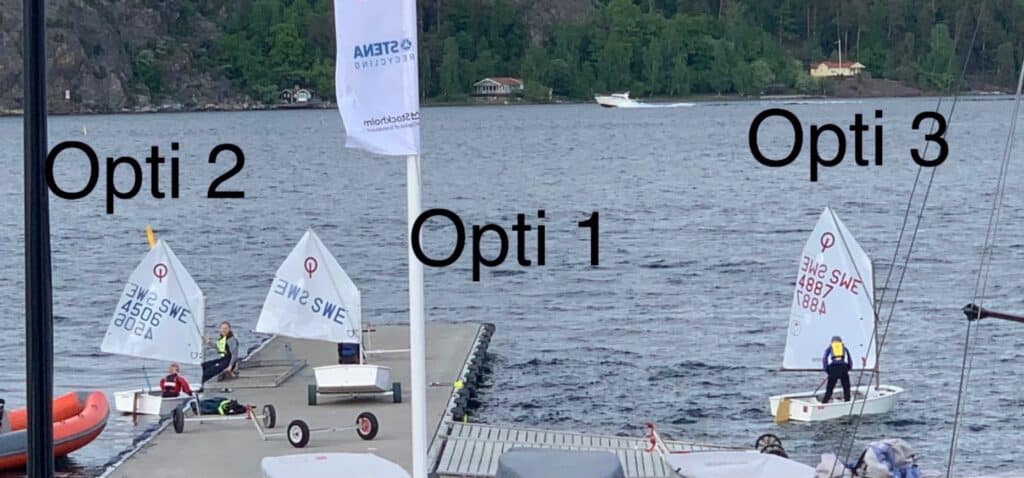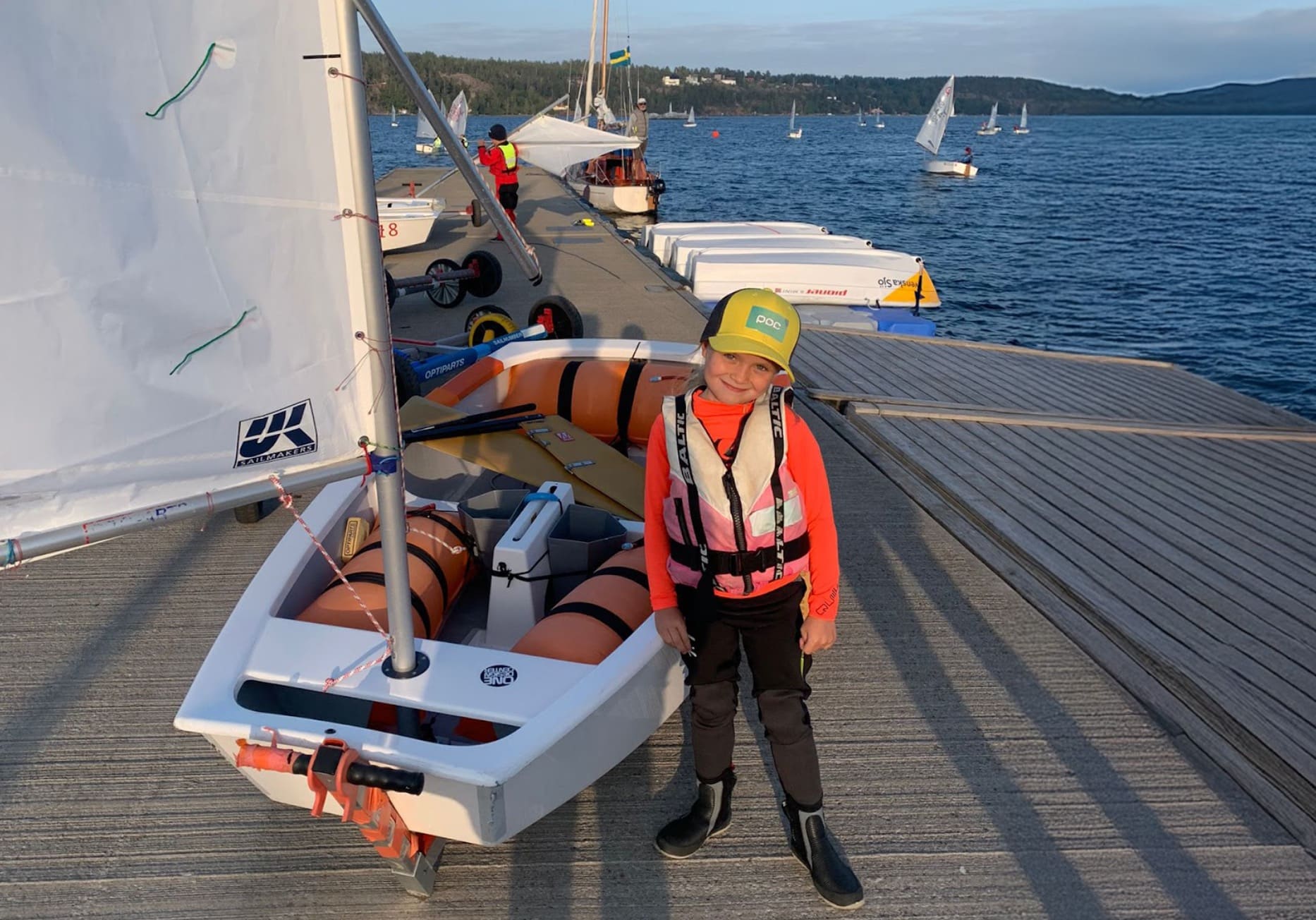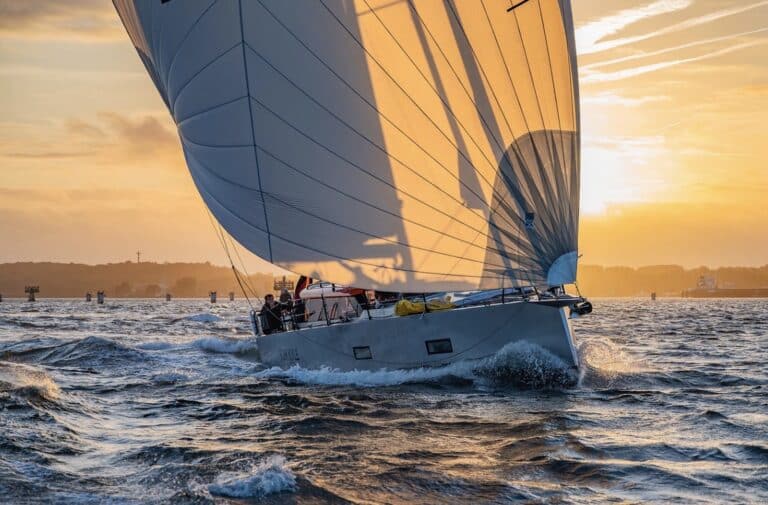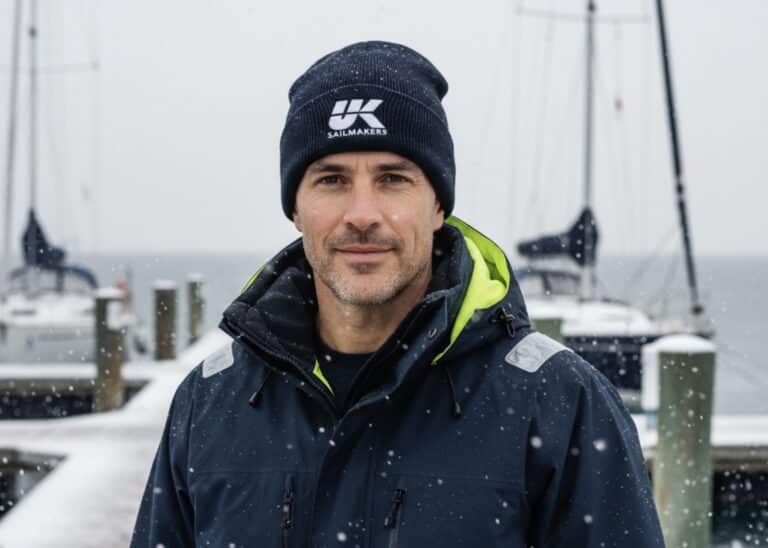Learning to sail is a rewarding challenge that takes time, especially when you’re young and lightweight. Many beginners start their sailing career in the Optimist dinghy, which has a stable box-shaped hull and a 3.5 sq m spritsail. But for smaller or less experienced sailors, even the standard Opti rig can feel like a lot to handle.
As parents know, those first solo sails can feel daunting for a young beginner. Sailing single-handed while learning to read the wind, balance the boat, and anticipate a heel or capsize is a lot to take in—especially for an eight-year-old. By easing the physical challenge and anxiety created by a full-sized sail, you help the child build confidence and discover the joy of sailing…the first step to a lifetime on the water.
Stefan Mälstad from Jolle Skoj (Dinghy Fun sailing school in Sweden) shared, “After decades of struggling with Optimists at various sailing schools, I decided to follow the example of the Laser/ILCA and RS Aero by offering sails in different sizes. In my living room, I cut a section from the middle of a regular Optimist sail and then reattached the foot to preserve the tack and clew. The smaller sail, now 2.5 sq m, proved much easier to handle for beginners. I also made an even smaller 1.5 sq m version to complete the Opti 1, Opti 2 and Opti 3 series, following the same logic as the ILCA 4, 6, 7 and Aero 5, 7, 9. The Opti 1 and 2 sails use the same spars as the standard Opti 3 rig.”
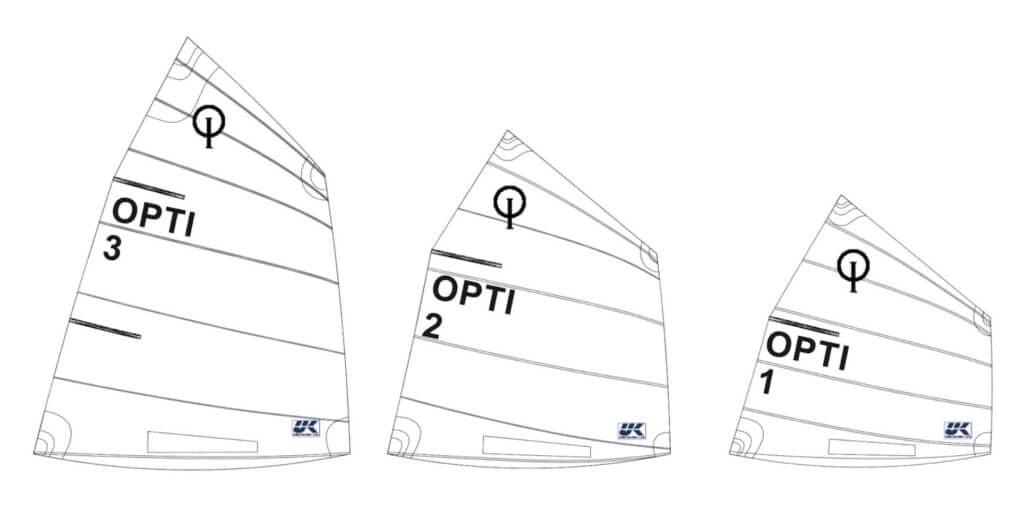
Every experienced sailor reduces sail area when the wind is too strong for the safety of the boat and the crew. Now, even the youngest Opti sailors can do the same.
To date, UK Sailmakers Sweden has sold over 60 Opti 1 and 2 training sails to sailing schools and youth programs, as well as 20 full-size Opti 3 training sails, made with heavier cloth for durability. For more information on UK Sailmakers’ Opti 1, 2, and 3 training sails, contact Oskar Skoting of UK Sailmakers Sweden (oskar.skoting@uksyversen.com).
